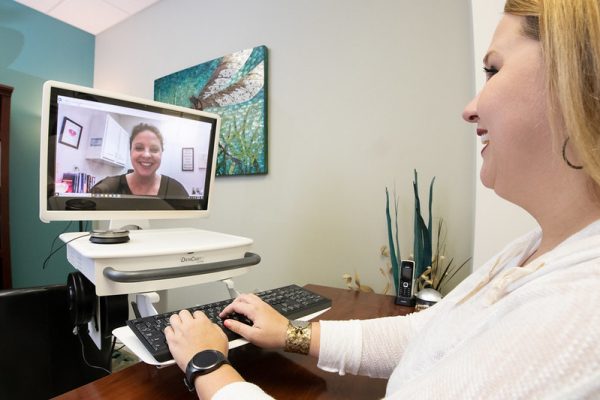
Medical sociologists Tania Jenkins (PhD, University of North Carolina-Chapel Hill) and Elaine Hernandez (PhD, MPH, Indiana University) pair up in this four-part series, COVID-19: Dispatches from Medical Sociology, to provide insight on how the current COVID-19 pandemic is changing the landscape of American healthcare. In the second segment, Jenkins and Hernandez cover telemedicine and changes to the patient-provider relationship.
- Social Inequities in Healthcare
- The Doctor Will “See” You Now
- Changing Dynamics within Healthcare Professions
- The Challenges Facing Medical Education
—
The Doctor Will “See” You Now
What happens when patients reach for their phones for health care?
The doctor will see you now…virtually. Experts estimate a roughly ten-fold increase in the number of telehealth visits as patients and their health care providers stay-at-home to prevent the spread of the coronavirus.
There are upsides to this shift. First, telemedicine allows patients to continue seeking routine and urgent care from their regular providers without putting anyone at additional risk of infection. Second, due to unprecedented expansions in insurance coverage, telemedicine has never been more accessible. On March 17, 2020, Medicare and Medicaid temporarily expanded coverage to an additional 80 services, including physical therapy and emergency department visits. Third, patients (and sometimes their providers) avoid the hassle of traveling to clinics or may, in some instances, consult faraway specialists (even in the ICU setting). These upsides may cut down on critical delays and reduce barriers to care.
Still, there are also important downsides to consider. Telemedicine will alter patient-provider interactions in ways that may worsen racial, ethnic, and socioeconomic inequalities in patient outcomes. Medical sociologists study the patient-provider relationship, paying special attention to the power dynamics during interactions. Medical care requires that providers have unobstructed access to patients’ bodies. Providers combine this “medical gaze” and the patient’s account to make medical decisions. But telemedicine removes half of this equation, requiring patients to examine their own bodies and verbalize their complaints in completely new ways. It challenges everyone to build new relationships and requires additional trust on behalf of providers towards their patients.

Optimistically, telemedicine could help level longstanding power imbalance between patients and providers, empowering patients in future medical encounters. But prior research points to a more pessimistic outlook, with telemedicine compounding existing disparities in health care access, cost, and quality, and harming patients with the fewest resources. Before the pandemic, under the U.S. employer-based health care system a significant number of people in the United States were already uninsured or underinsured. With health insurance tied to employment, skyrocketing rates of unemployment pose major challenges for those needing access to care. Even ignoring financial hardships, and the administrative burden of enrolling in Medicaid, telemedicine visits do not offset the steep decline in in-person health care. And for those able to access care, patients’ have a wide range of health literacy levels and/or access to a private, quiet location with video or broadband technology.
These patterns will likely worsen existing racial and ethnic inequities in health care. Patients of color are less trusting of physicians than Whites, stemming from a long legacy of systemic racism within health care systems and research. The infamous Tuskegee Study, for example, has had lasting effects on the health of African Americans and their faith in the health care system. When utilizing health care, distrust among African Americans is tied to physicians’ interpersonal competence. If patients of color disproportionately experience low-quality telemedicine visits, their trust in providers may erode further, inhibiting care-seeking and hindering compliance. Importantly, health care providers of color — women in particular — will also likely be the targets of discrimination.
Although the COVID-19 pandemic may have prompted rapid expansion of telemedicine, it is poised to worsen inequities in health care and place those whose health is worse at an unequal disadvantage. Mitigating these health care inequities will require carefully designed health care protocols, such as uniform clinic-level protocols that ensure consistent recommendations to patients. Still, as new technologies like telemedicine grow more popular, the system must attend even more closely to old inequities that pre-date the pandemic
Stay tuned for our next installment on how COVID-19 is changing dynamics within health professions.
